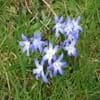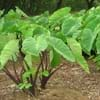Life Span
Perennial
Perennial
Type
Bulb or Corm or Tuber
Vegetable
Origin
Mediterranean, Turkey
Hybrid origin, Mexico, Central America, South America
Types
Not Available
Not Available
Habitat
meadows, Terrestrial
Coastal Regions
USDA Hardiness Zone
3-9
11-15
Sunset Zone
21,22
A1, A2, A3, H1, H2, 1a, 1b, 2a, 2b, 3a, 3b, 4, 5, 6, 7, 8, 9, 10, 11, 12, 13, 14, 15, 16, 17, 18, 19, 20, 21, 22, 23, 24
Habit
Clump-Forming
Upright/Erect
Flower Color
White, Blue, Pink, Violet
Yellow
Flower Color Modifier
Bicolor
Bicolor
Fruit Color
Not Available
Red
Leaf Color in Spring
Green
Green, Dark Green
Leaf Color in Summer
Light Green
Green, Dark Green
Leaf Color in Fall
Several shades of Green
Green, Dark Green
Leaf Color in Winter
Light Green
Green, Dark Green
Leaf Shape
Long Linear
Ovate
Plant Season
Spring, Winter
Spring, Summer, Fall
Sunlight
Full Sun, Partial Sun
Full Sun
Type of Soil
Loam
Loam, Sand
The pH of Soil
Acidic, Neutral, Alkaline
Neutral
Soil Drainage
Well drained
Well drained
Bloom Time
Early Spring, Late Winter
Indeterminate
Tolerances
Drought
Drought
Where to Plant?
Container, Ground, Pot
Container, Ground
How to Plant?
From bulbs, Seedlings
Grafting, Seedlings
Plant Maintenance
Medium
Medium
Watering Requirements
Average Water Needs, Do Not over Water, Do not water frequently, Keep the ground moist but not water-logged, Never Over-water
Needs more water during establishment
In Summer
Lots of watering
Lots of watering
In Spring
Moderate
Moderate
In Winter
Average Water
Average Water
Soil pH
Acidic, Neutral, Alkaline
Neutral
Soil Type
Loam
Loam, Sand
Soil Drainage Capacity
Well drained
Well drained
Sun Exposure
Full Sun, Partial Sun
Full Sun
Pruning
Remove damaged leaves, Remove dead branches, Remove dead leaves
Pinch or prune as they grow to promote branching and bushiness
Fertilizers
All-Purpose Liquid Fertilizer
14-14-14 Fertilizer, Compost
Pests and Diseases
Red blotch
Anthracnose, Aphids, Red blotch, Rust
Plant Tolerance
Drought
Heat Tolerance, Salt and Soil Compaction
Flower Petal Number
Single
Single
Fragrant Bark/Stem
No
Yes
Foliage Texture
Fine
Medium
Foliage Sheen
Matte
Matte
Attracts
Bees, Flying insects
Aphids, Not Available, Squirrels
Allergy
Skin rash
Stomach pain, Vomiting
Aesthetic Uses
Beautification, Bouquets, Ground Cover, Showy Purposes
Used in parkland
Beauty Benefits
Not Available
Anti-ageing, Blackheads, Reduce Bruises
Environmental Uses
Air purification
Shadow Tree, Soil protection
Medicinal Uses
No Medicinal Use
Dehydration, Diabetes, Diarrhea, Nutrients, Weight loss
Part of Plant Used
Flowers
Fruits
Other Uses
Decoration Purposes, Showy Purposes, Used as Ornamental plant
Application in Handicrafts, Food for animals, Showy Purposes
Used As Indoor Plant
Yes
No
Used As Outdoor Plant
Yes
Yes
Garden Design
Alpine, Container, Foundation, Lawns and Turf, Mixed Border, Rock Garden / Wall, Wildflower
Edible, Herb, Vegetable
Botanical Name
CHIONODOXA
Manilkara zapota
Common Name
Chionodoxa, Glory-of-the-Snow
sapodilla , chikoo, Sapota
In German
Chionodoxa
Breiapfelbaum
In French
Chionodoxa
Sapotillier
In Spanish
Chionodoxa
chicle
In Greek
Chionodoxa
sapodilla
In Portuguese
Chionodoxa
sapodilla
In Polish
Chionodoxa
Pigwica właściwa, sapodilla
In Latin
Chionodoxa
sapodilla
Phylum
Platyhelminthes
Magnoliophyta
Class
Cestoda
Magnoliopsida
Family
Liliaceae
Sapotaceae
Clade
Angiosperms, Monocots
Angiosperms, Asterids, Eudicots
Tribe
Not Available
Sapoteae
Subfamily
Not Available
Sapotoideae
Season and Care of Chionodoxa and Sapodilla
Season and care of Chionodoxa and Sapodilla is important to know. While considering everything about Chionodoxa and Sapodilla Care, growing season is an essential factor. Chionodoxa season is Spring and Winter and Sapodilla season is Spring and Winter. The type of soil for Chionodoxa is Loam and for Sapodilla is Loam, Sand while the PH of soil for Chionodoxa is Acidic, Neutral, Alkaline and for Sapodilla is Neutral.
Chionodoxa and Sapodilla Physical Information
Chionodoxa and Sapodilla physical information is very important for comparison. Chionodoxa height is 10.20 cm and width 5.10 cm whereas Sapodilla height is 150.00 cm and width 60.00 cm. The color specification of Chionodoxa and Sapodilla are as follows:
Chionodoxa flower color: White, Blue, Pink and Violet
Chionodoxa leaf color: Green
Sapodilla flower color: Yellow
- Sapodilla leaf color: Green and Dark Green
Care of Chionodoxa and Sapodilla
Care of Chionodoxa and Sapodilla include pruning, fertilizers, watering etc. Chionodoxa pruning is done Remove damaged leaves, Remove dead branches and Remove dead leaves and Sapodilla pruning is done Pinch or prune as they grow to promote branching and bushiness. In summer Chionodoxa needs Lots of watering and in winter, it needs Average Water. Whereas, in summer Sapodilla needs Lots of watering and in winter, it needs Average Water.





